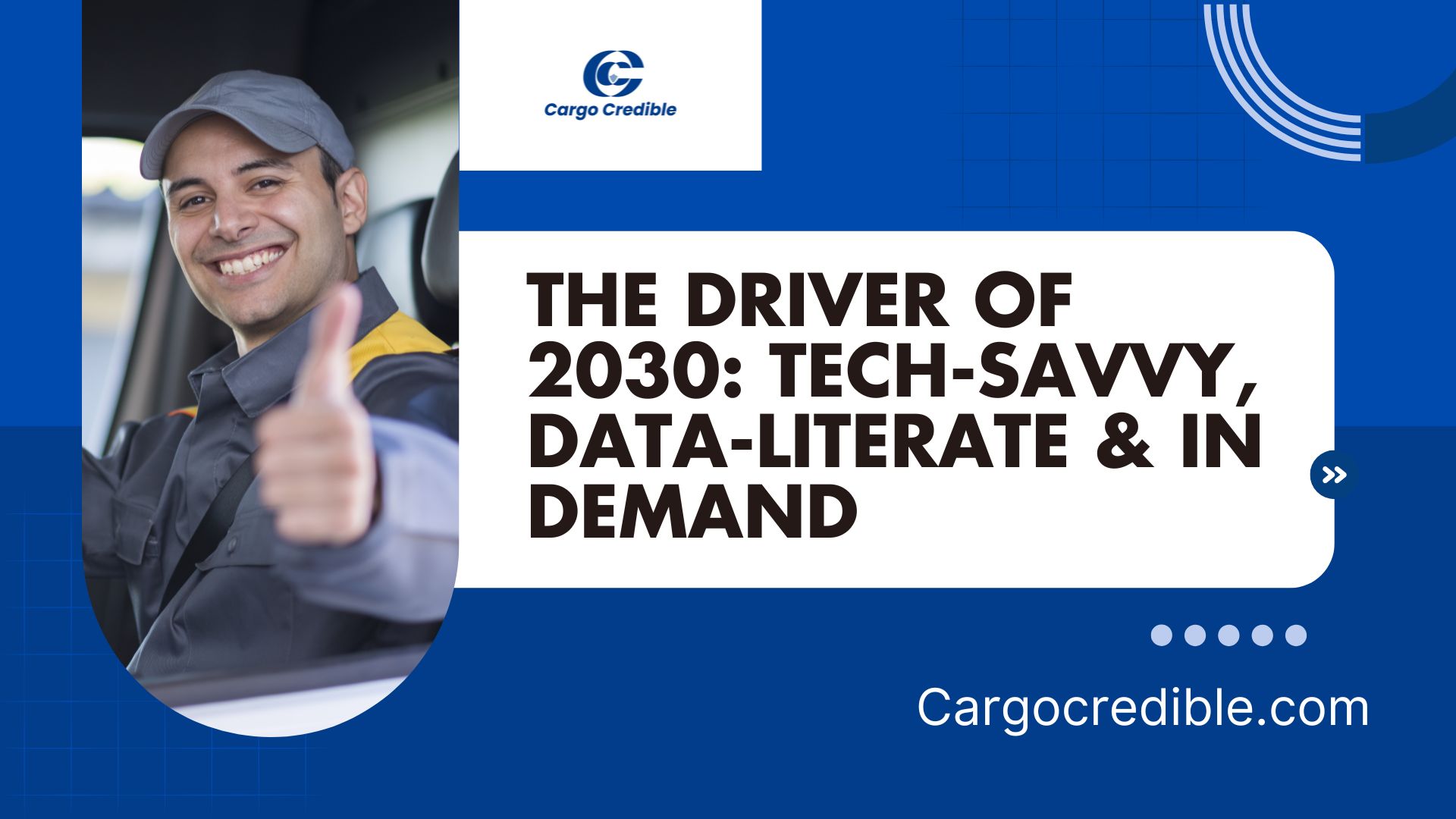The Driver of 2030: Tech-Savvy, Data-Literate & In Demand

The road ahead for trucking is transforming rapidly due to environmental pressures, infrastructure deficits, and human wellbeing challenges. At the center of this change is the Driver of 2030, a professional who blends traditional driving skills with advanced technology, data literacy, and environmental responsibility to keep supply chains moving safely and sustainably.
The Changing Environment
Many regions still face poor roads, outdated logistics systems, and congested infrastructure, creating tougher conditions for drivers. Meanwhile, climate change pushes governments and companies toward cleaner transport with electric and hydrogen-powered trucks, stricter emissions standards, and smarter operational practices. At the same time, drivers grapple with fatigue, mental stress, and isolation, making their wellbeing vital to maintaining a stable workforce.
Key Competencies of the Driver of 2030
Tech-Savvy Professional
Trucks are no longer simple machines but sophisticated computers on wheels equipped with AI-assisted navigation, digital dashboards, autonomous driving features, and remote diagnostics. Drivers must proficiently use, troubleshoot, and train others on these systems. Managing electric or hydrogen refueling, interacting with interconnected traffic infrastructure, and monitoring vehicle health through multiple screens will be everyday tasks.
Data-Literate Analyst
The driver receives constant streams of data—fuel efficiency, driving behavior, cargo conditions, route details. They interpret this data to improve driving habits, optimize routes, comply with regulations, and ensure cargo safety. Being able to read and act on these insights will be as important as reading the road itself.
Environmentally Conscious Operator
Beyond driving, the 2030 driver instills eco-friendly driving methods, manages energy use effectively, reports environmental hazards, and acts as a champion of sustainable logistics, contributing directly to corporate and societal climate goals.
Bridging the Training Gap
Today's drivers often lack training on digital technologies, with many learning outdated manual controls. Additionally, younger tech-savvy generations may not yet see trucking as a digitally advanced career. To close this gap, the industry needs:
- Digital upskilling programs and simulation-based training
- Partnerships between technology firms and training schools
- Online, accessible learning modules for continuous education
- Mentorship programs pairing experienced drivers with tech trainers
Expanding training beyond traditional Commercial Driver’s License (CDL) requirements is essential. By 2030, a driver’s digital fluency certification could be as critical as their CDL.
The Human Core
Despite advanced automation, human judgment, adaptability, empathy, and problem-solving remain irreplaceable. Drivers will remain essential, especially for handling complex routes and unpredictable conditions. Prioritizing their mental health, physical rest, and professional growth underpins a resilient transportation future.
Market Demand and Career Outlook
Drivers with this blend of skills will be highly sought after, commanding better pay, improved working conditions, and respect as leaders, technicians, and environmental stewards in logistics. They will oversee technology, mentor others, and play strategic roles in supply chains, ensuring operational efficiencies and sustainability goals.
Summary Table
The transformation to the Driver of 2030 is not a distant vision—it’s happening now. Industry investment in the skills, tools, and wellbeing of these professionals will build a safer, cleaner, and more efficient transportation future.
Comments (0)
- No comments yet.